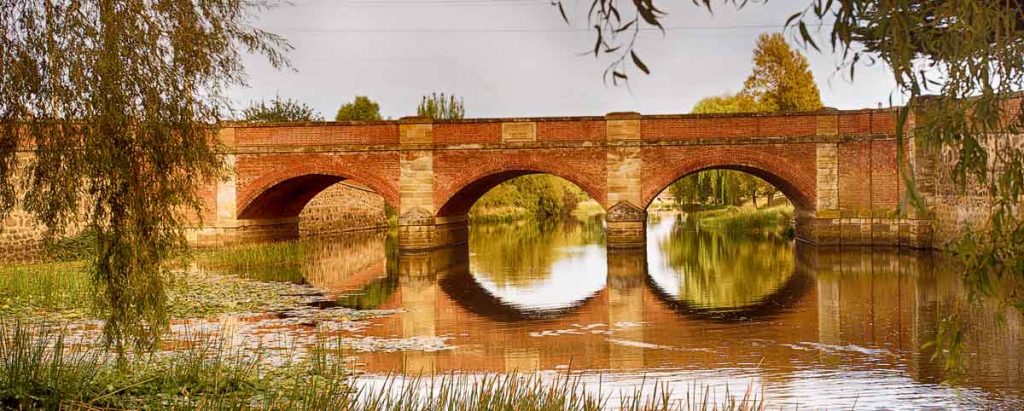
The Red Bridge at Campbell Town
In 1821, Governor Lachlan Macquarie founded Campbell Town as a garrison town where travellers could rest en route between Hobart and Launceston. Today the town is still a major refreshment stop along the route between Tassie’s two largest cities.
Campbell Town lies about 70 km southeast of Launceston and about 135 km north of Hobart along the Midland Highway, National Highway 1. The small town, which has fewer than 1,000 inhabitants, lies along the Elizabeth River, which was named after Macquarie’s wife. Mrs Macquarie, born Elizabeth Campbell, also gave her name to the town itself.
The Elizabeth River used to be called Parndokerner Liapinder before the colonists moved in. The people who lived here were called the Tayaranutapuna and the area, which they referred to as Waylata, was a meeting place en route between the East Coast and the Western Tiers.
Settlers were quickly drawn to the area, which had grasslands that provided good grazing for their livestock. This led to violent skirmishes with the local Aboriginal population. In 1827, for instance, a group of settlers and soldiers from the 40th Regiment attacked an undefended camp and killed as many as 70 people, including children. They did this as a reprisal for the killing of two shepherds.
Campbell Town’s early infrastructure was largely built by convicts. The Original 1822 Bridge is one of Australia’s oldest and crossed the Elizabeth River along its original course. You can still walk across this bridge. The railway bridge is known as the Black Bridge for the blue limestone it’s made of. However, the most famous bridge in town is the Red Bridge, designed by convict architect James Blackburn and built in 1838. It’s Australia’s oldest surviving brick arch bridge and still carries the Midland Highway’s traffic across the Elizabeth River.
In 1832, Campbell Town got its first post office. The Campbell Town Agricultural Show has been held every year since 1838, making it the oldest continually running agricultural show in Australia.
The Grand Foxhunter’s Return was built in stages from around 1833 to 1840 and was the main coaching inn in town. Its cellars housed the convicts working on the Red Bridge and today are home to The Book Cellar book shop, while the inn itself still operates as a hotel. Campbell Town also has a remarkable collection of other buildings from those early days and at the Heritage Highway Museum you can pick up a brochure mapping all the heritage buildings of note.
A fascinating and heartbreaking reminder of just how Tasmania, and Australia for that matter, was built is the Convict Brick Trail, which begins at the Red Bridge. Red bricks in the pavement tell you the names of some of the convicts transported to Tasmania, what their crimes and sentences were, how and when they arrived and in some cases also what happened to them.
On the northern side of the Red Bridge there is a park with stunning macrocarpa pine sculptures created by local artist Eddie Freeman and his chainsaw. These sculptures depict different aspects of the town’s history and are yet another reason to stop over and spend some time in Campbell Town.
[sc:EndOfNorthEastTasPage]